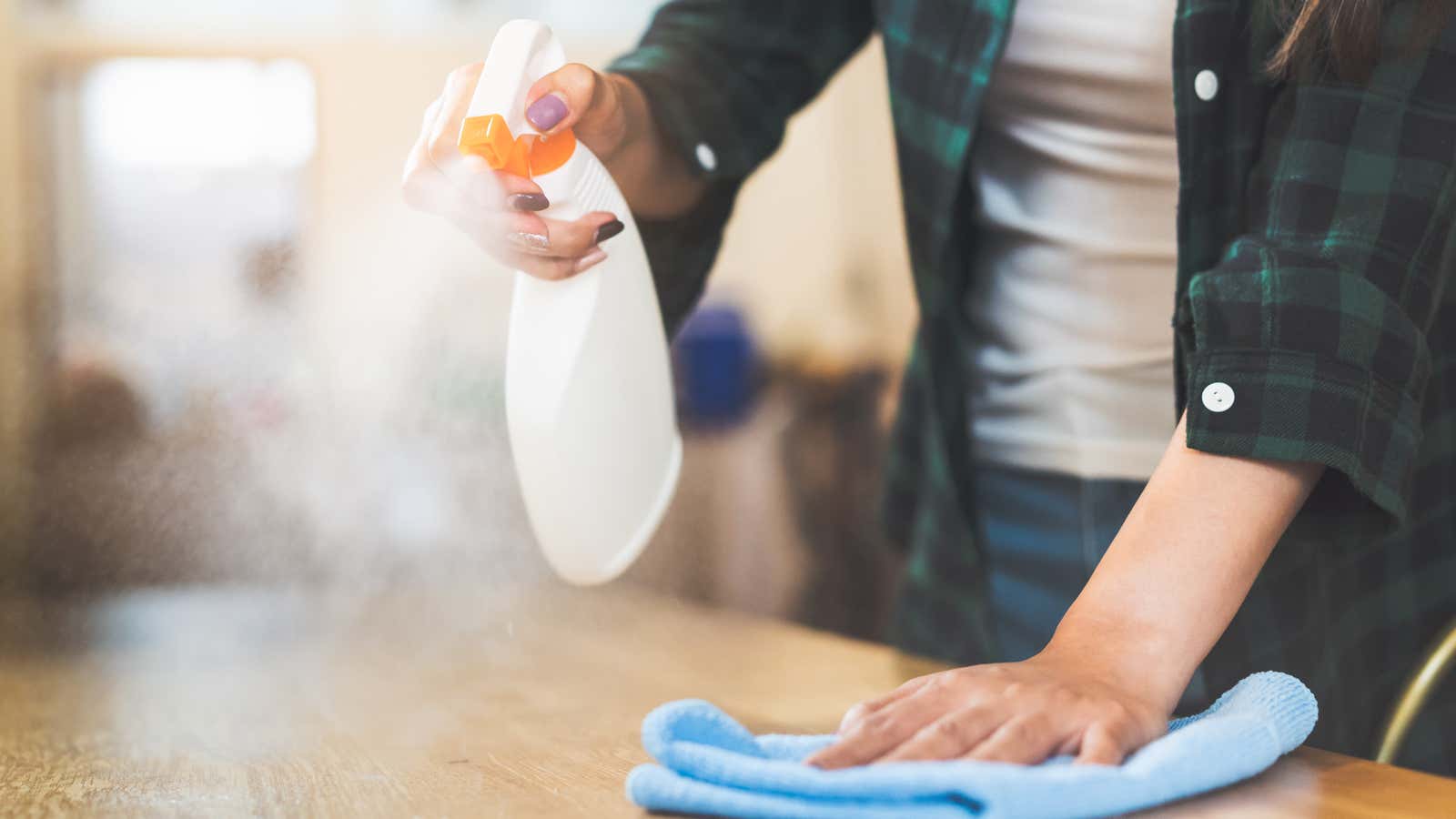How Long Does the Coronavirus Live on Different Surfaces?

Will I get sick from opening the parcel? What about handling a library book? Is it safe to drink from the fountain? How about lifting weights in the gym? Should I be worried about my toddler’s habit of putting everything in his mouth? We know that the coronavirus can survive for a while on the surface, which leaves many questions about its characteristics.
To answer some of your questions, we reached out to two infectious disease specialists at UTHealth McGovern School of Medicine: Susan Wootton and Michael Chung. Both are medical doctors with extensive experience in treating infectious diseases and were ready to answer all our questions and concerns about how long the COVID-19 virus can survive on different surfaces, and about the best ways to protect themselves.
What do we know about the survival of the virus on different surfaces?
Research into how long the coronavirus survives on different surfaces is still ongoing, leaving many open questions. The good news is that COVID-19 appears to be a lot like other coronaviruses, according to the World Health Organization , which helps us understand what to expect.
So what do we already know?
We know that the lifespan of coronavirus on different surfaces ranges from a few hours to a few days, depending on factors such as temperature and humidity. Meanwhile, a study showing that coronaviruses can last up to 9 days was conducted under controlled laboratory conditions.
Survival duration will vary in the real world, Wootton said, with the most likely estimate being a couple of hours, depending on factors such as temperature and humidity.
“The virus will last longer in a humid, cool environment,” Wootton said. Generally speaking, hot and dry conditions are bad for the virus and good for us.
Any more good news? A recent review of a range of studies on various coronaviruses shows that surface disinfection is indeed very effective in killing the virus.
What items should you be careful with?
Wootton said that library books are fine, while you have to be careful with surfaces that many different people work with. “Particular attention should be paid to surfaces with a high touch and high touch,” said Chang.
Water fountains , sports equipment , shopping carts , doorknobs, and children’s toys can harbor a lot of bugs, while items like books and blankets that aren’t usually used as much are not much of a risk. Therefore, it is best not to let your toddler put all toys in his mouth and be careful when touching objects that many other people have touched. If you need to touch something that might be dirty, it is best to wash your hands afterwards and not touch your face.
Meanwhile, the World Health Organization says there is a very low risk of proliferation due to parcels sent out within days or weeks.
One thing people should definitely clean: your phone . We carry our phones with us everywhere, handle them more often than we can count, making it the best repository for all the nasty bugs we encounter throughout the day.
If you have access to one, then there are UV disinfection boxes that can help. Otherwise, a lint-free cloth lightly dampened with a 1: 1 mixture of 70% isopropyl alcohol and diluted water will do.
How do I clean up so I don’t get sick?
“I wouldn’t worry so much about soft surfaces,” Wootton said. “Focus more on hard surfaces with a high degree of contact, such as doorknobs and kitchen countertops.”
In places like the gym, it is important to wipe down the equipment after use. Commercially available disinfectant wipes found in most gyms do work if they contain some combination of isopropyl alcohol and / or benzyl ammonium chloride, Chang said. Rubbing alcohol kills germs, while benzylammonium chloride removes dirt and pathogens.
It is important to allow the surface to air dry after wiping it with a disinfectant. You should not wipe the sanitizer off with a towel right away, as this will limit the amount of time the alcohol has to kill the virus.
For more details, the CDC has released several guidelines for cleaning and disinfecting your home. Cleaning is the removal of germs and dirt from surfaces. While it does not kill germs, removing it reduces the risk of infection spreading. Disinfection uses chemicals to kill germs on surfaces.
For cleaning and disinfection, CDC recommends using gloves to clean dirty surfaces with a detergent and then disinfect with either a dilute bleach solution or an alcohol solution with at least 70% alcohol. Just make sure you do so in a well-ventilated area when using these products.
For washing, it is recommended to wash as usual in the warmest water and then dry completely. Remember, viruses don’t thrive in hot, dry conditions. If you want to eradicate these viruses, the dryer is the perfect place.
How often should we clean?
“At least once a day, paying particular attention to surfaces with high levels of contact,” Chang said.
So pamper your inner person neat, start washing and remember to wash your hands.